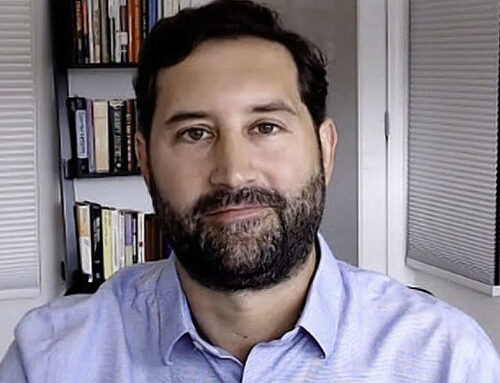Tribal leaders discuss land loss, environmental challenges in coastal Virginia
June 12, 2025
Indigenous communities have navigated Virginia’s land and waters for thousands of years, weathering countless wars, storms and growing development.
Local tribal leaders say they’re now facing several environmental challenges, such as flooding and shoreline erosion, that threaten some of the land and resources they’ve worked hard to protect.
“We’re seeing an impact that is different in my mind than when I was growing up,” said Reggie Stewart, second assistant chief of the Chickahominy Indian Tribe. “That is a change in our climate, and I think it is having an effect on our properties, and also our citizens.”
Stewart, as well as members of the Nansemond Indian Nation and Upper Mattaponi Tribe, spoke Wednesday night for the latest in the Chesapeake Bay Foundation’s climate lecture series at the Brock Environmental Center in Virginia Beach.
“Indians were the original caretakers of the Chesapeake Bay,” said Christy Everett, Hampton Roads director for the Bay Foundation, who moderated the discussion. “Their resilience is a testament to their strength and a vital part of the American story. Today, Indian leaders and communities are at the forefront of environmental justice.”
Many Indigenous communities are also particularly vulnerable to the impacts of climate change.
Scientists highlighted the issue in the most recent National Climate Assessment, the government’s most comprehensive report on how climate change is affecting the U.S.
Sea level rise of approximately 3 feet by 2100 could result in the loss of more than 13,000 historic and prehistoric archaeological sites, while directly harming contemporary Indigenous communities in Virginia and other Southeast states, according to the report.
“Settler colonialism and climate change are forcing displacement once again, causing stress and grief,” officials wrote. “Land dispossession in the Southeast has impeded Indigenous peoples from weathering climate hazards and deprived them of environmental amenities.”
This week, coastal Virginia leaders described what they’re seeing in their communities, and how history has played a role.
Stewart said the Chickahominy Tribe a few years ago re-acquired a 900-acre riverfront property from the state called Mamanahunt, the likely site of a 1614 treaty between the tribe and English colonists.
“When we walk on that property, I get goosebumps,” he said. “You can feel something there.”
Rising tides, more intense rainfall and erosion have already impacted the land.
“When we started that purchase, it was stated (there was) a certain amount of property,” Stewart said. “Then by the time we consummated the purchase, it was actually less than that that wasn’t covered by water. So I do think that rising water levels are impacting those areas.”
Chief Frank Adams said his Upper Mattaponi Tribe fled to the upper reaches of the Mattaponi River centuries ago to hide from settlers.
That shallower water is now sometimes harder to navigate, as he experienced last week, trying to travel to a recently purchased property.
“We went up about a mile and then there was so many trees that had fallen across the river that you couldn’t kayak or canoe down,” Adams said. “We finally had to turn this flat-bottom boat around because you couldn’t go any further.”
He noted the reservation of their neighbor in King William County, the Pamunkey Indian Tribe, was recently listed among the National Trust for Historic Preservation’s Most Endangered Historic Places in America.
“Their reservation is sinking and they are starting to look for higher ground,” Adams said. “Land that they’ve been on for centuries.”
The Nansemond, Chickahominy and Upper Mattaponi were among six Virginia tribes that gained federal recognition in 2018.
Virginia’s Racial Integrity Act of 1924, which prohibited interracial marriage and limited racial categories to only “white” or “colored,” complicated officials’ ability to gather evidence to submit for federal recognition, Adams said. Official documents such as birth certificates were scrubbed of any mention of Indigenous people for decades.
Recognition now gives the tribes a seat at the table to be consulted when public or private projects touch on ancestral lands. (The Nansemond Indian Nation, for example, went back and forth with a Canada-based energy company a few years ago over a pipeline expansion in Hampton Roads before reaching an agreement.)
Adams said they’re still in the early stages of building a leadership framework, capacity and funding sources to adapt to new responsibilities that come with it.
The tribes are also working on environmental solutions.
The Nansemond are restoring an ancestral property in Suffolk called Mattanock, which it recently took back over after a years-long fight with the city. The restoration includes planting trees, oyster reefs and removing invasive species.
The Upper Mattaponi works with schools to teach students about composting, Adams said. The tribe also has a community garden and works on local fisheries, such as catching and tagging Atlantic sturgeon to study the reasons behind the fish’s decline.
“Every tribe has an environmental department,” he said.
Search
RECENT PRESS RELEASES
Related Post




